Award Holder: Charles Radclyffe
University: University of Otago
Title of Research: Prehistoric Settlement and the Development of Pottery Production and Exchange in the Manning Strait, Solomon Islands
Introduction
The prehistoric settlement of the Pacific represents one of the greatest maritime migrations in human history, covering a third of the surface of the globe. Human activity in the region also covers an extraordinarily long period of over 50,000 years. Archaeological study of the Pacific has been carried out for about a century and has played an instrumental role in shaping our understanding of prehistoric human colonisation and mobility patterns, and the formation of the region’s incredible cultural and linguistic diversity. Research into trading systems in Melanesia, which is one of three geographic sub-regions of Oceania (Fig. 1), have been particularly valuable in showcasing the socioeconomic complexity of interaction and exchange that has occurred between indigenous island communities. A notable example is Malinowski’s (1922) ethnographic study of the Kula in the Trobriand Islands of southeast Papua New Guinea. Ethnographically documented patterns of Melanesian exchange such as the Kula have been demonstrated by archaeological investigations to be but the latest episodes in a long and complex history of dynamic exchange configurations.
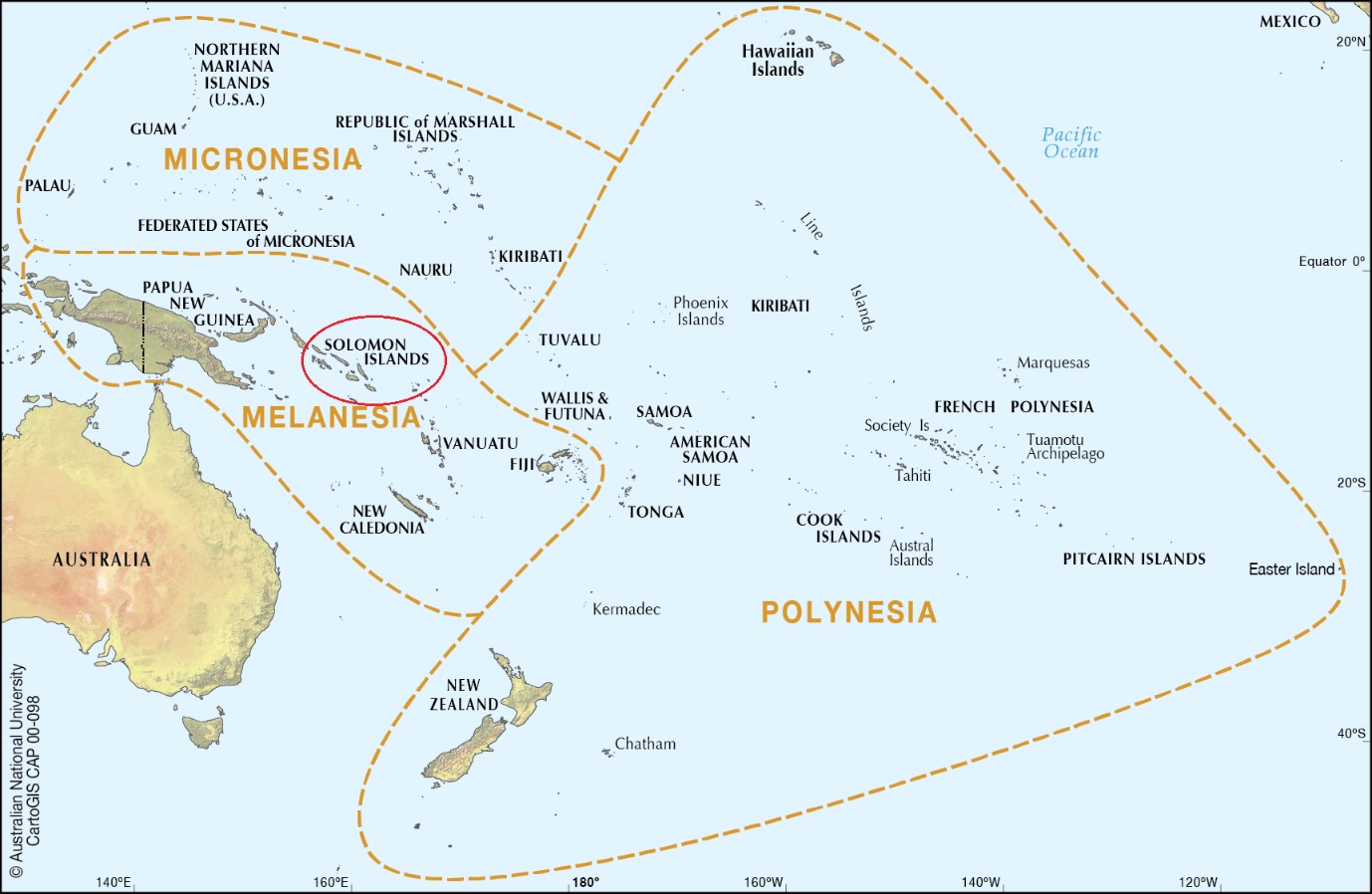
Figure 1 Map of Oceania showing its three major sub-regions – Melanesia, Micronesia and Polynesia – with Solomon Islands circled in red (map from CartoGIS Services, ANU).
The present study is an archaeological examination of the prehistoric settlement of Solomon Islands and the development of inter-communal interaction and exchange patterns in an understudied part of the country called the Manning Strait. It has involved four phases of field research, the last and most comprehensive of which was funded by the Royal Anthropological Institute and was carried out over two months in early 2018.
Background
Archaeological research has been undertaken in Solomon Islands since the 1960s, however much of the focus has been placed disproportionately on parts of the country. This includes the New Georgia group in the Western Solomons (Sheppard and Walter 2006; Felgate 2003; Nagaoka 2011), the Reef/Santa-Cruz Islands in the Eastern Solomons (Green and Yen 2009) and parts of the Central and Northern Solomons (Roe 1993; Specht 1969; Irwin 1972; Wickler 1995) (Figure 2). In contrast to these regions where there have been long-term intensive survey projects, Choiseul, Santa Isabel and the islands scattered between these two provinces in the Manning Strait have received very little attention. My study addresses this and utilises new data amassed from field and laboratory research to test two broader theoretical models related to the timing and nature of the first migrations of people into the Southwest Pacific, called the Lapita expansion, and the evolutionary development of Melanesian exchange systems.
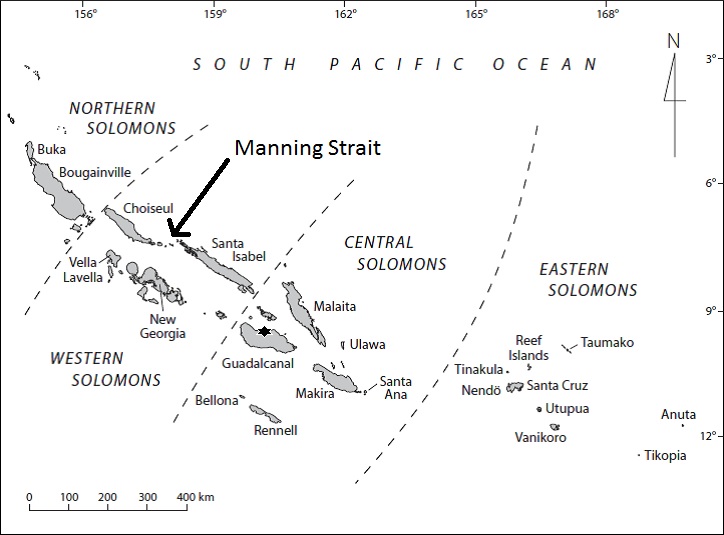
Figure 2 Map of Solomon Islands showing the Manning Strait (black star is the capital city, Honiara).
The Lapita expansion occurred around 3000 years ago and involved the colonisation of islands located southeast of the Solomons including Vanuatu, Fiji, New Caledonia, Tonga and Samoa which represented a large portion of the Pacific that had previously remained Terra nullius. Archaeologists have learned from investigating ‘Lapita sites’ that these migrants were responsible for introducing new ways of living centred upon long-distance sea travel, the use of pottery, inhabiting coastal environments and exploiting sedentary agricultural subsistence strategies (Spriggs 1997; Kirch 1997). Lapita sites have been identified in almost all major island groups located between the Bismarck Archipelago and Samoa and radiocarbon dating has demonstrated that colonisation occurred in a continuous sequence and west-to-east direction. An anomalous exception to this trend is the central chain of islands in the Solomons archipelago where no such sites have been found. Sheppard and Walter (2006), who have carried out extensive surveying in the Western Solomons, have argued the region was likely to have been leap-frogged during the Lapita expansion. Other archaeologists including Stuart Bedford, Patrick Kirch and Tim Thomas have challenged this theory, arguing that the lack of evidence of Lapita occupation in the region is more attributable to an absence of evidence rather than the evidence of absence (Sheppard 2011: 818-832). My research contributes to this theoretical debate by providing new archaeological findings from part of the Western Solomons that until now has been largely unexplored.
The second theoretical model I test in my research was proposed by Jim Allen (1984) in his landmark study of ‘subsistence trading’ among the Western Motu on the southern coast of mainland Papua New Guinea. Exchange networks of the Western Motu are best known for the long-distance trading expeditions, called Hiri, which were practised up until the mid-1950s and involved the exchange of thousands of clay pots for sago (a starchy food crop). The Hiri were performed by specialised middleman traders and were an annual subsistence strategy for the Motu communities whose crop yields were limited due to the naturally marginal environments they occupied. Allen interpreted from his research that there was an evolutionary trend visible in the archaeological record concerning the way in which exchange systems in Melanesia have transformed over time. In his model Allen argued that “systems could be predicted to become spatially smaller, trading to become more intense, and specialized trade items to become more diversified” (1984: 456). My research contributes new findings from a compositional study of pottery collected in the Manning Strait to test Allen’s model.
Aims and Methods
One of the two research aims of this study is to address a gap in our understanding about the nature and timing of the prehistoric settlement of an understudied region of the Western Solomons. Building upon this, it seeks to contribute towards addressing a theoretical debate about whether the main islands of the Solomons archipelago were settled or ‘leap-frogged’ during the eastward expansion of Lapita groups from the Bismarck Archipelago. The second research aim is to examine and assess the development of interaction between prehistoric communities in the Manning Strait. Findings made from this are compared against historical trends seen in other parts of Melanesia with the intention to expand upon our understanding about how exchange systems and spheres of interaction have transformed over time in the western Pacific.
A three-pronged approach is taken to address these research aims, drawing upon archaeological fieldwork, laboratory analysis and reviewing ethnographic and historical literature. My field research was guided by two objectives: 1) to establish a sequence of human occupation, and 2) to collect material culture, especially pottery, that could be studied as a proxy for larger movements of migration, mobility and exchange. My first objective involved carrying out multiple excavations in the Manning Strait and performing, significantly, the first ever radiocarbon dating of material from the region. As part of my second objective, I will be conducting a geochemical characterisation of ceramics and stone (obsidian and chert) tools collected in the field. In addition to carrying out these objectives, an important part of my field research was speaking with local community members and documenting oral histories and kastom (“traditional/sacred”) stories about the sites I investigated. These will be compared against my findings from the archaeological record as well as my review of the ethnographic and historical writings.
Research in the Field
As a Solomon Islander and having lived most of my life in the country’s capital Honiara, I was at an advantage at the outset of my fieldwork by being fluent in the lingua franca (Solomon Islands Pijin). I was also aided by the fact that over the course of my previous field expeditions I had established a broad network of local contacts and had collaborated closely with the Solomon Islands National Museum (SINM). Two field archaeologists from SINM, Grinta Ala’eke and Stephen Manebosa, accompanied me on the field trip and were a key part of my research team. Despite having these advantages, however, I faced several challenges while in the field. The region I investigated, southern Choiseul, is a remote and underdeveloped part of Solomon Islands (Figure 3). No road networks apart from logging roads exist and the most common form of transportation used are paddle canoes and speedboats. Cyclones are a frequent threat to sea travel during the rainy reason months of November to March and were a cause of several delays during my travel. A generally poor level of education among rural populations, specifically in relation to what archaeological research is, was also problematic as it made gaining permission to access sites difficult. A common criticism I experienced was my excavations being mistaken for mineral prospecting and ‘searching for gold’, which were spurred by a combination of the island’s history of nickel and bauxite mining as well as widespread folk stories of treasure and gold being buried by Japanese and American soldiers who fought in the Solomons during World War II. On the whole, though, the field expedition proved to be a great success.
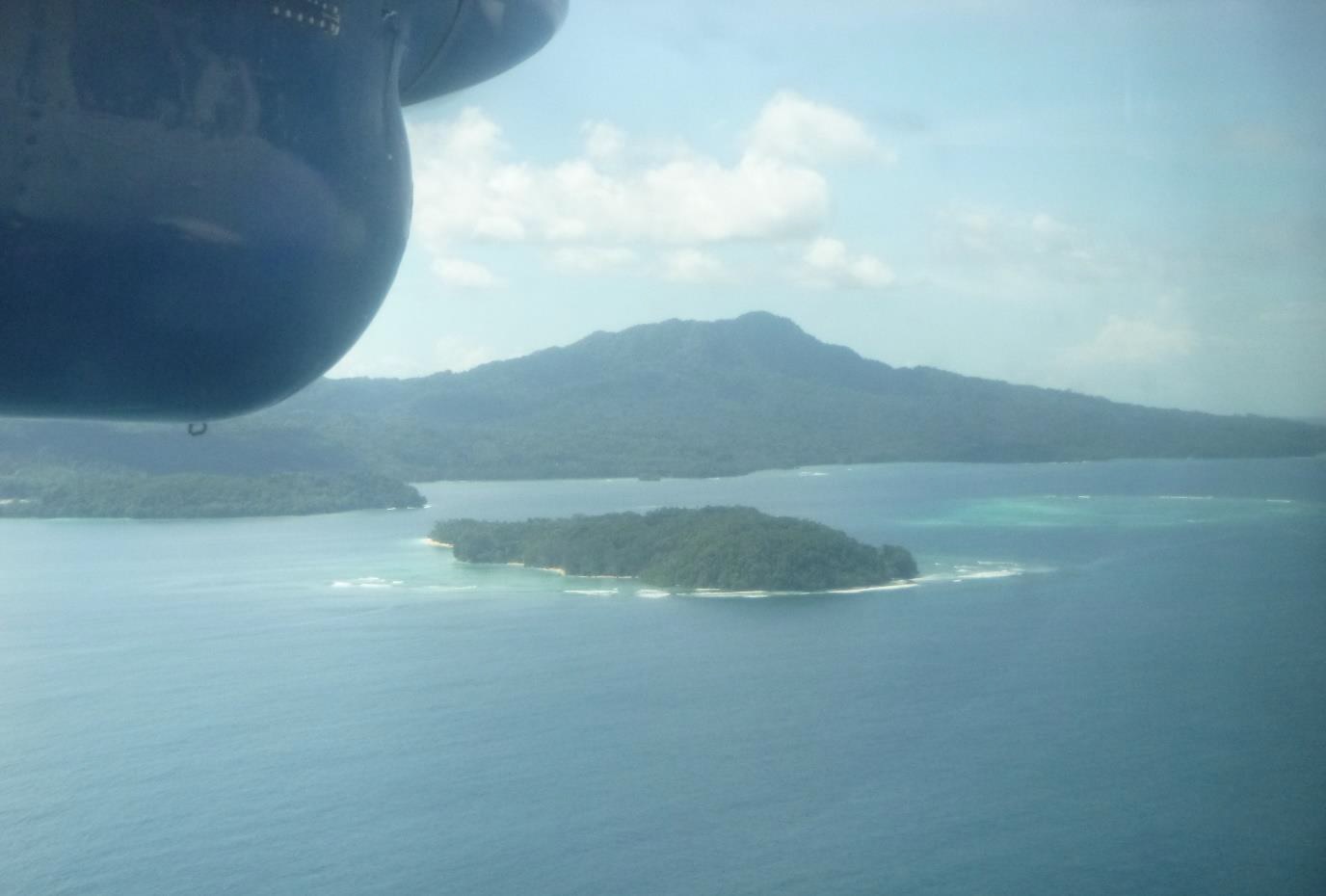
Figure 3 Aerial photograph of southern Choiseul (by author).
During the expedition, I was fortunate to discover and excavate the only stratified ceramic deposits that have been recorded in the Western Solomons. Sites of this kind are rare in the region due to the nature of its earliest known settlers occupying inter-tidal zones which are prone to submergence and stratigraphic disturbance caused by the ocean. The ceramic sites my research team and I excavated have not yet been radiocarbon dated, although excitingly they have exhibited stylistic similarities with some of the earliest known pottery assemblages identified in the Western Solomons (late to post-Lapita, ~2500 years ago). Other significant discoveries included over a dozen shrine complexes I recorded on two islands located off the southeast end of Choiseul. These monumental structures were diverse in their form and structure and would have necessitated well-organised and intensive labour in their construction. They ranged, for example, from large (+200 kg) coral slabs erected into rectangular formations to low coral and basalt mounds heaped in linear and circular formations (Figure 4). Distinct artefacts including fishing net weights manufactured from coral and basalt grinding stones and hammerstones used for nut processing were found lying on the shrines which provided traces to the ceremonial and socio-economic functions they would have served in the past. Shrines such as these are well-documented in the nearby New Georgia group and have been dated to have evolved relatively recently in prehistory (700-100 years ago) (Thomas 2014). Something that has stood out from my fieldwork is that the majority of decorated pottery that was recovered in southern Choiseul does not conform to recent pottery styles. Intriguingly, this may suggest a development of shrine construction that predates what has so far been recorded in Solomon Islands.
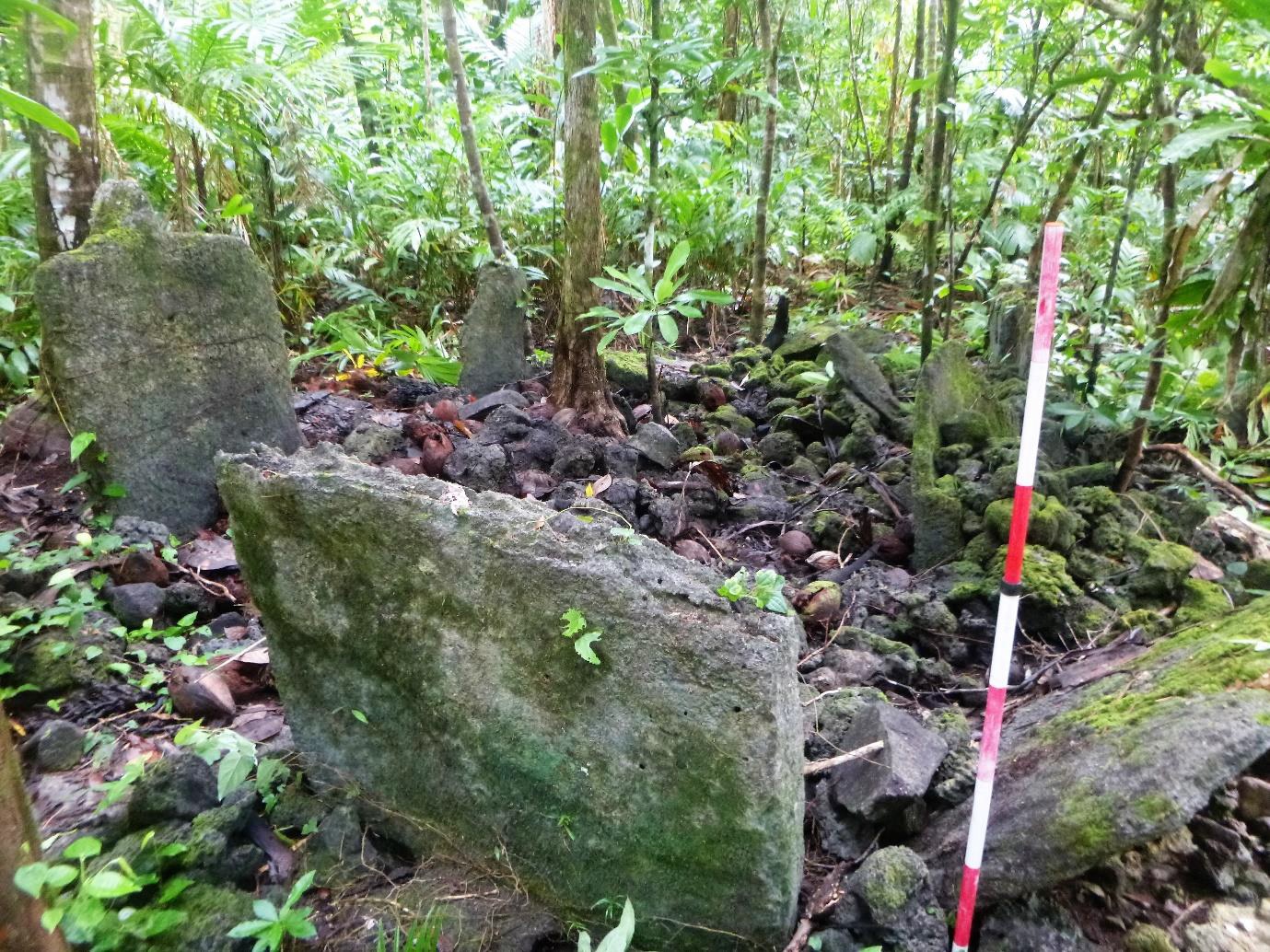
Figure 4 A coral slab shrine containing basalt grinding stones, pottery and worked shell ornaments on its surface (photographed by author).
Contribution
This study makes a significant contribution towards addressing a gap in our understanding about the nature and timing of prehistoric settlement of an understudied part of Solomon Islands. I argue that an uneven geographic spread of archaeological surveying of the country has made it challenging to effectively integrate the region within sequences of colonisation known for the wider western Pacific. Solomon Islands has remained an anomaly in reconstructions of the Lapita expansion due to an absence of sites associated with the earliest Lapita migrations identified in the archipelago’s central chain of islands. My research addresses this and provides data to test the contentious “leap frog” model proposed by Sheppard and Walter (2006). Additionally, the project provides new evidence to make comparisons and contrasts with a long-standing trend seen in the evolution of Melanesian exchange systems. This trend, which was first modelled by Allen (1994), is characterised by the contraction and regionalisation of spheres of interaction as well as an intensification of trade and specialisation occurring over time. My investigation of prehistoric production and exchange of pottery in the Manning Strait tests the applicability of Allen’s model and, ultimately, is aimed to contribute towards improving our understanding of the development of Melanesian trade systems and the dynamic nature of social networks of inter-island interaction.
My research also contributes towards the preservation of archaeological sites and intangible elements of the cultural heritage of Solomon Islands. As for many parts of the Pacific, the Solomons has little infrastructure and human resources in place for the study and protection of its traditional cultural heritage. This is problematic as the national economy is largely dependent on mining and logging ventures which are some of the leading causes of destruction of tambu (“sacred”) sites (e.g. shrines, burials). Furthermore, the increasing influence of globalisation and Western modernisation of Solomon Islands’ society poses a threat to the continual degradation of kastom knowledge and the region’s incredible cultural diversity. An important goal of my collaboration with the Solomon Islands National Museum has been to raise public awareness particularly in rural districts about the importance of preserving archaeological sites and traditional cultural practices. So far, efforts made to promote anthropological study in Solomon Islands have been facilitated predominantly by overseas scholars and institutions. This project is therefore unique as it represents one of only a handful of anthropological projects undertaken domestically by a Solomon Islander. I am proud of this achievement and am delighted that my study represents an important step towards advancing anthropological research in Solomon Islands.
To finish, I would like to sincerely thank the Royal Anthropological Institute for contributing enormously to my doctoral research and giving me the opportunity to carry out an extensive season of fieldwork. I would especially like to express my gratitude to the Advisory Panel who reviewed my application, Professor Paul Lane for being a helpful and supportive mentor and Amanda Vinson and other administration staff. Tagio tumas! (“Thank you very much!”)
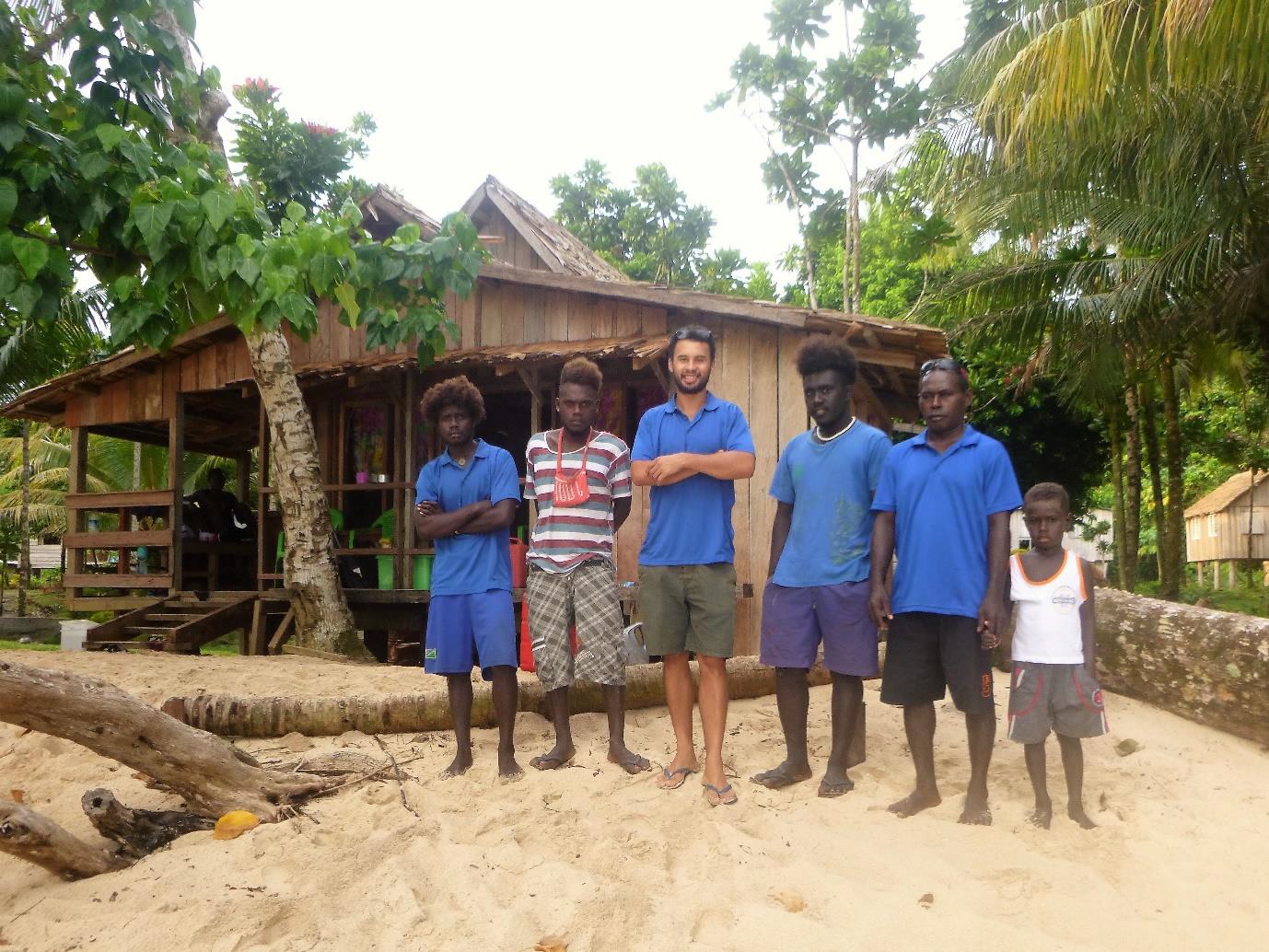
Figure 5 My research team at Rokoso Village, one of the communities I worked with in southern Choiseul (middle: author; far right: Chief Denson and his youngest son; remainder: volunteer youth).
References
Allen, J. (1984) Pots and Poor Princes: A Multidimensional Approach to the Role of Pottery Trading in Coastal Papua. In S. Van Der Leeuw and A. Pritchard (eds.), The Many Dimensions of Pottery: Ceramics in Archaeology and Anthropology. Amsterdam: Universiteit van Amsterdam, pp. 409-473.
Felgate, M. (2003) Reading Lapita in Near Oceania: Intertidal and Shallow Water Pottery Scatters, Roviana Lagoon, New Georgia, Solomon Islands. PhD Thesis, University of Auckland.
Green, R. C. & Yen, D. E. (2009) The Southeast Solomon Island Culture History Project: Principal Investigators’ Overview of the 1970s Project including Recent and Current Research. In P. Sheppard, T. Thomas, and G. Summerhayes (eds.) Lapita: Ancestors and Descendants. Auckland: New Zealand Archaeological Association, pp 147-172.
Irwin, G. (1972) An Archaeological Survey in the Shortland Islands, B. S. I. P. MA Thesis, University of Auckland.
Kirch, P. (1997) The Lapita Peoples: Ancestors of the Oceanic World. Cambridge: Blackwell Publishers.
Malinowski, B. (1922) Argonauts of the Western Pacific: an Account of Native Enterprise and adventure in the Archipelagoes of Melanesian New Guinea. London: Routledge and Kegan Paul.
Nagaoka, T. (2011) Late Prehistoric-early Historic Houses and Settlement Space on Nusa Roviana, New Georgia Group, Solomon Islands. PhD Thesis, University of Auckland.
Roe, D. (1993) Prehistory without Pots: Prehistoric Settlement and Economy of North-west Guadalcanal, Solomon Islands. PhD Thesis, Australian National University.
Sheppard, P. (2011) Lapita colonization across the Near/Remote Oceania boundary. Current Anthropology. 52, (6): 799-840.
Sheppard, P. and Walter, R. (2006) A Revised Model of Solomon Islands Culture History. The Journal of the Polynesian Society. 115, (1): 47-76.
Specht, J. R. (1969) Prehistoric and Modern Pottery Industries of Buka Island, T. P. N. G. PhD Thesis, Australian National University.
Spriggs, M. (1996) The Island Melanesians. Oxford: Blackwell Publishers.
Terrell, J. and Irwin, G. J. (1972) History and tradition in the Northern Solomons: an analytical study of the Torau migration to Southern Bougainville. The Journal of Polynesian Society. 81, (3): 317 349.
Thomas, T., 2014. Shrines in the Landscape of New Georgia. In T. Thomas and H. Martinsson-Wallin (eds.) Monuments and People in the Pacific. Uppsala University, pp. 47-76.
Wickler, S. K. (1995) Twenty Nine Thousand Years on Buka: Long-term Cultural Change in the Northern Solomon Islands. PhD Thesis, University of Hawaii.
